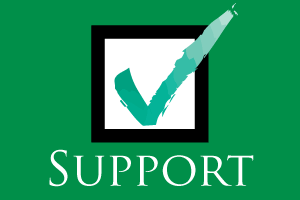Even more unpredictable than a recession, the COVID-19 pandemic has forced business owners to take a hard look at their viability and make very difficult business decisions. Many have closed up shop, are reducing their workforce or determining how to keep employees on the payroll in the midst of severe economic uncertainty. In this episode of The Workplace podcast, CalChamber Executive Vice President and General Counsel Erika Frank is joined by employment law expert Jennifer Shaw to discuss important considerations and requirements for employers when they undergo a reduction in force (RIF).
Business Uncertainty
With the COVID-19 pandemic crisis, every day brings a slew of confusing new developments and information that impact business operations. Many times, employers are left only with mandates that will continue into the “foreseeable future,” Frank points out.
Business owners, she continues, are left to make determinations on their businesses’ future with few concrete details. Complicating the situation further are the various federal relief programs for businesses which have had complications during the initial launch and are, to date, lagging in providing short term relief, Shaw, the founding partner of the Shaw Law Group, says.
Given all the uncertainty that exists, some employers believe there is no choice other than to lay off their workers. In doing so, however, employers must understand the requirements that come with this type of action.
Furlough vs. Reduction in Force/Layoff
Shaw clarifies that “furlough” is a term applicable to public-sector employees. What employers are currently doing in California is a “reduction in force” (where a position is removed entirely), layoff or temporary layoff.
If a worker is placed on “furlough,” his/her accrued paid time off (PTO) or vacation time must be given to the worker if she/he is not brought in to work in one pay period. If an employee is temporarily laid off, the employer must ask if the employee wants his/her PTO or vacation time cashed out, Shaw explains.
Advanced Notice, Final Paychecks
The federal Worker Adjustment and Retraining Notification (WARN) Act (and California’s CalWARN) set notice and advanced notice requirements for employers who lay off workers, Shaw says. While federal law does not consider a temporary layoff as a WARN event, California courts have ruled that temporary layoffs do indeed require a WARN notice.
Although Governor Gavin Newsom has removed some of the time constraints set forth in CalWARN, Shaw points out that a WARN notice containing very specific information is still required.
“So you can’t just use a WARN Act notice that you’ve used in the past,” she cautions.
Steering the conversation to address final paycheck rules, Frank asks Shaw how employers can comply with final paycheck rules if they have remote workers or don’t have a brick-and-mortar workplace.
Shaw points out that currently employers still must give a final paycheck on a worker’s last day. If not, the employer must pay waiting time penalties per each day the paycheck is late.
Some of the suggestions Shaw provided to comply with the requirements are:
- Send the paycheck via direct deposit;
- Personally drive and deliver a paycheck to a worker’s home address;
- Send the paycheck via overnight mail service, such as FedEx;
- Pay waiting time penalties in advance if delays are expected;
- Pick a termination date ahead of time and mail the check in advance;
- Do not require a delivery signature when mailing a paycheck. If the worker refuses to accept the package or fails to pick up the package at a post office, employers will be on the hook for waiting time penalties. One alternative is to mail the check and take a picture of the date stamp placed on the package as proof the package was mailed.
As employers weigh whether to temporarily lay off workers, Shaw cautions that employers cannot assume they can simply rehire someone once the crisis passes. A worker can find a new job elsewhere or decide not to return to the employer.
Moreover, rehiring someone potentially means that employers will need to reinstate California Paid Sick Leave balance, and all documentation will need to be re-signed and filed, such as a Form I-9, policy handbook paperwork, nondisclosure agreements, etc.



